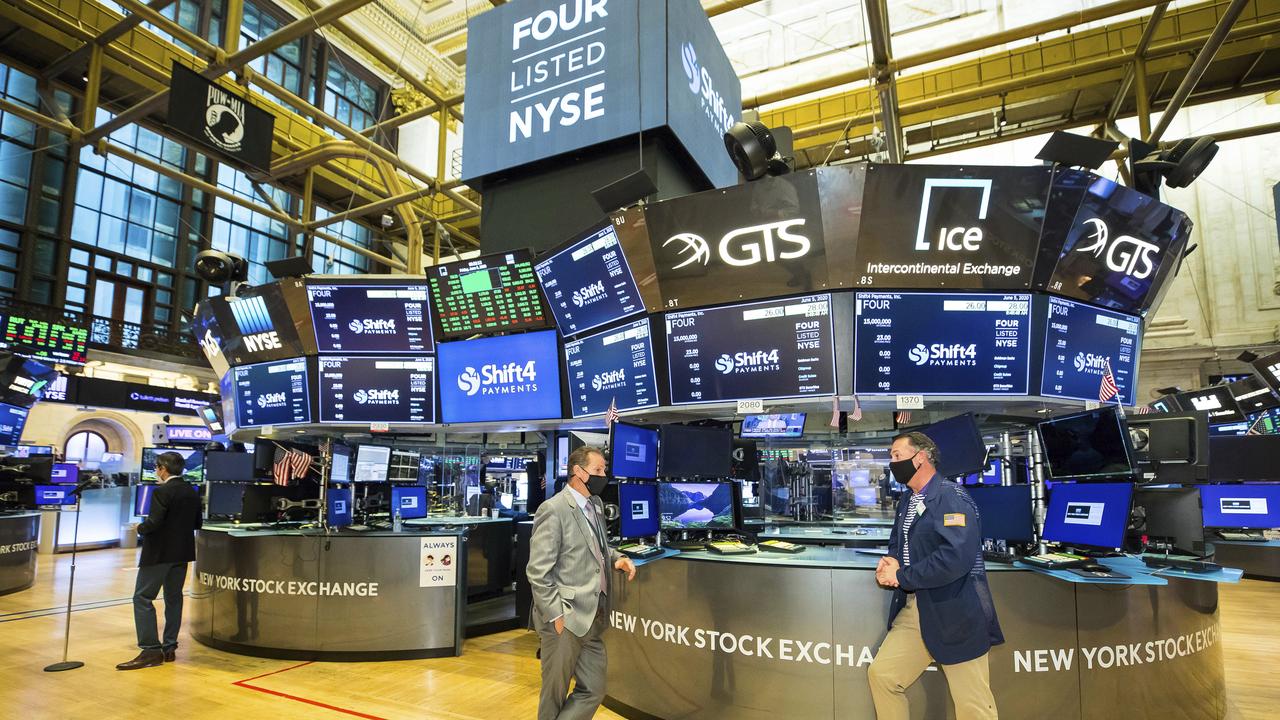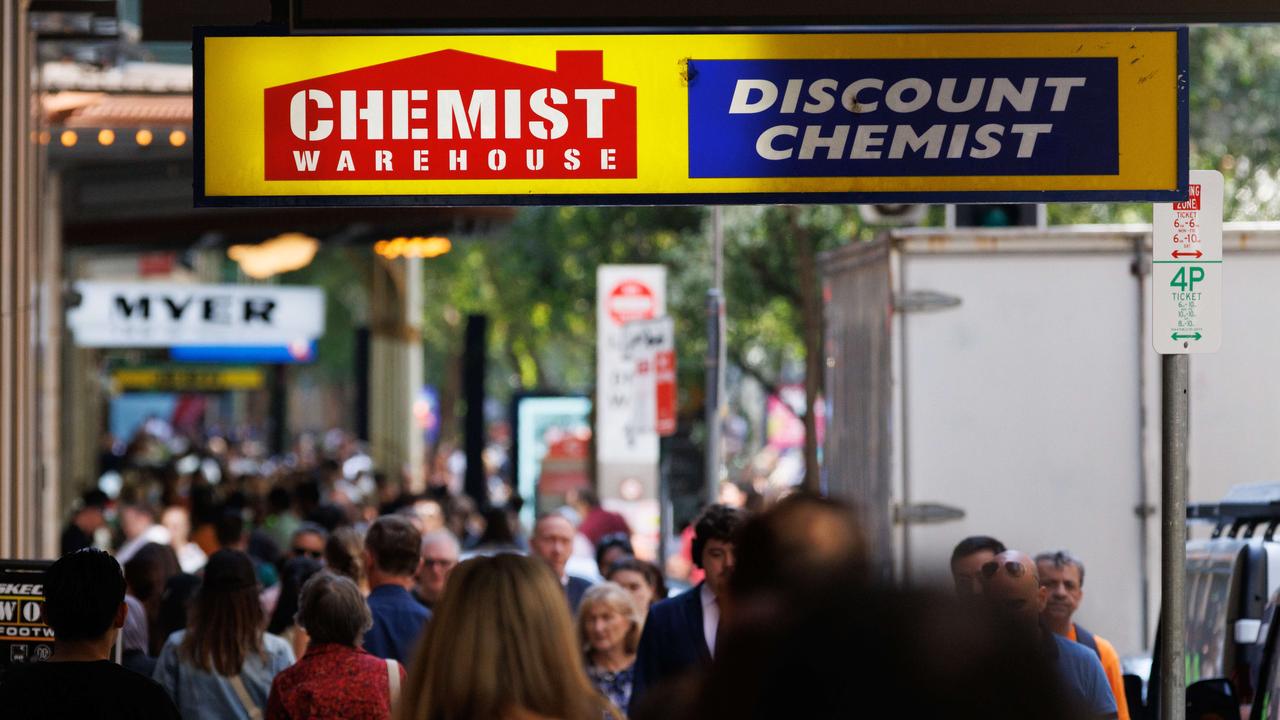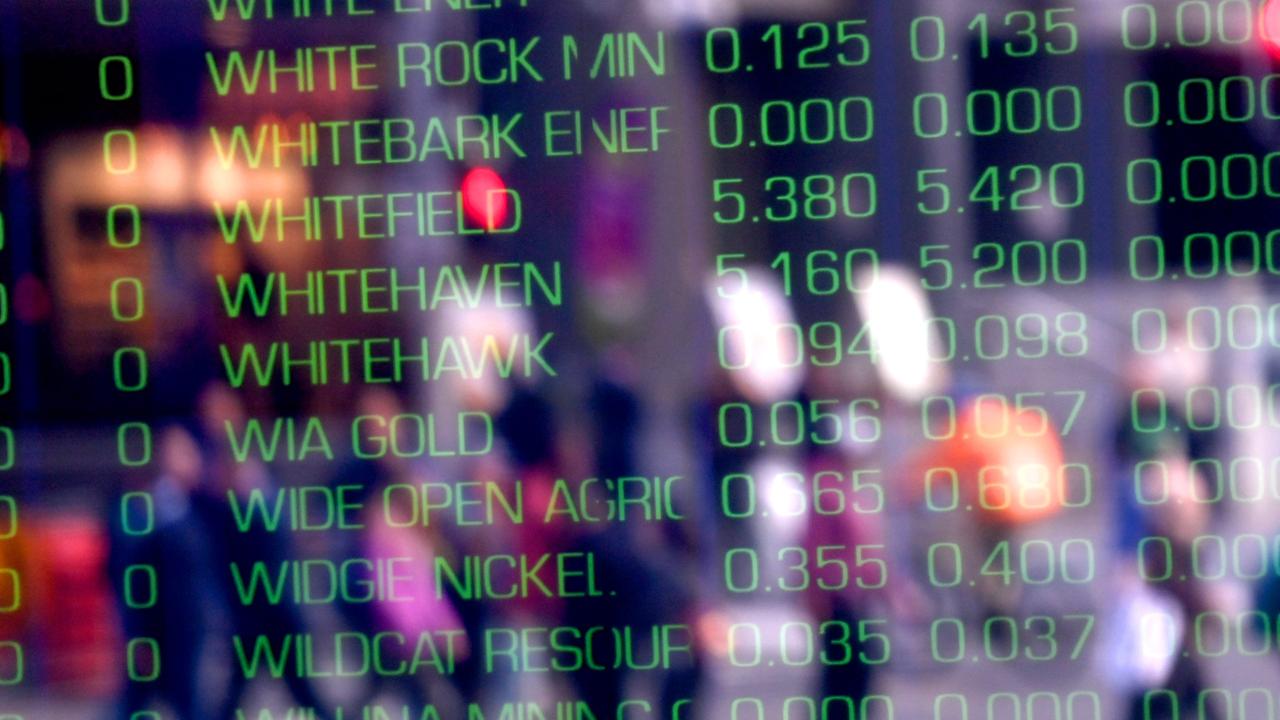Aussie share market plunges deep into red following concerning rise in US coronavirus cases
Any hope of a quick recovery from the economic shock of the pandemic is dissipating as local stocks continue the sharp falls.

The Australian share market plunged nearly 3 per cent lower at the open of trade today following Wall Street deep into the red after a rise in coronavirus cases in the United States sparked fears the worst of the pandemic is yet to pass.
News of 44.2 million job losses in the world’s largest economy also landed a dagger to the optimistic belief of some investors who had hoped global growth would recover sharply from the economic shock of the deadly virus.
By midday, the ASX200 had pared losses and was 2.5 per cent lower at 5819.3 points.
Energy stocks were the worst affected due to falling oil prices but the banking sector suffered heavy losses also, down more than 3.5 per cent.
Forecasts from the US indicate interest rates will stay at historic lows until 2023, placing enormous pressure on the profit margins of home loan products.
The Dow Jones index had nearly 7 per cent wiped off its value overnight and the Australian indices were always going to struggle as a result, compounding the ASX’s 3 per cent plummet on Thursday.
Investors had been scrambling back into the market on the belief the worst of the economic shock was in the rear view mirror but the Federal Reserve poured cold water on that narrative this week.
Among a number of concerning forecasts, it expects its unemployment to soar to 10 per cent by the end of the year.
This triggered an aggressive fall in Aussie stocks on Thursday where investors abandoned their positions.
RELATED: World on brink of ‘enormous shock’
RELATED: Extraordinary warning for mum and dad investors
Global markets were expecting the Federal Reserve to provide optimistic talking points and upwards projections, CMC Markets chief strategist Michael McCarthy told news.com.au.
“That optimism they were looking for did not eventuate and we’ve seen a very sharp turn around in sentiment,” he said.
Yesterday’s result snapped a seven day run of positive gains for a market which has recorded a healthy rise since the depths of the economic shock of the pandemic.
The broader All Ordinaries rose more than 30 per cent from March 23 through to the close of trade on Wednesday, adding about $500 billion in value to the index.
But Mr McCarthy said the reality check delivered yesterday was the turning point in the path to recovery.
“The potential for a V-shape recovery and thinking around that is receding,” he said.
Pepperstone head of research Chris Weston said this dip is the “sell-off we needed to have” but was less convinced the Federal Reserve’s forecast was to blame.
He said global shares had exhausted all of the positive sentiment in an aggressive run over the last few weeks and is now in need of fresh positivity to rise higher.
“This is a market that had run very, very hard,” he said.
“The elastic band had been stretched too far and what we’re seeing is frothy positioning coming out of the market.”
Burman chief investment officer Julia Lee said the major test for the market’s recovery will come when companies report their earnings towards the middle of the year, when the true cost of the pandemic will be revealed.
Many investors have gambled on a snapback in fortunes, heavily buying up shares.
“The big question in the medium term is if earnings growth has come to the party or whether we will continue to see weakness and see prices being dragged back down,” she told news.com.au.
“At the moment it’s a battle between the outlook for earnings versus expectations, and at the moment the market is pricing in a recovery.
“As long as those earnings materialise then the market is fine, but if those earnings don’t materialise then prices will come back down to earth to reflect that.”
WALL STREET
Overnight, the sell-off in the United States was broad as the Nasdaq snapped a three-day streak of record closing highs and all 11 major sectors of the S&P 500 falling from nearly 4.0 per cent to well over 9.0 per cent.
“There’s really no buy point,” said Paul Nolte, portfolio manager at Kingsview Asset Management in Chicago.
“It’s pretty much selling all the way through.”
Tim Ghriskey, chief investment strategist at Inverness Counsel in New York, agreed.
“Everything’s for sale,” Ghriskey added.
“There’s fear we’re near a top.”
US deaths from COVID-19 could reach 200,000 in September, a grim result of the country’s economic reopening before getting growth of new cases down to a controllable level, according to a leading health expert.
At the conclusion of its two-day monetary policy meeting on Wednesday, the US Federal Reserve released its first pandemic-era economic outlook after which Chair Jerome Powell warned of a “long road” to recovery.

“The Fed keeping rates steady through 2022 could give investors the impression that the Fed may be more concerned about the pace of economic recovery than originally anticipated,” said Joseph Sroka, chief investment officer at NovaPoint in Atlanta.
Economic data appeared to back up the Fed’s gloomy economic projections, with jobless claims still more than double their peak during the Great Recession and continuing claims at an astoundingly high 20.9 million.
— with wires




